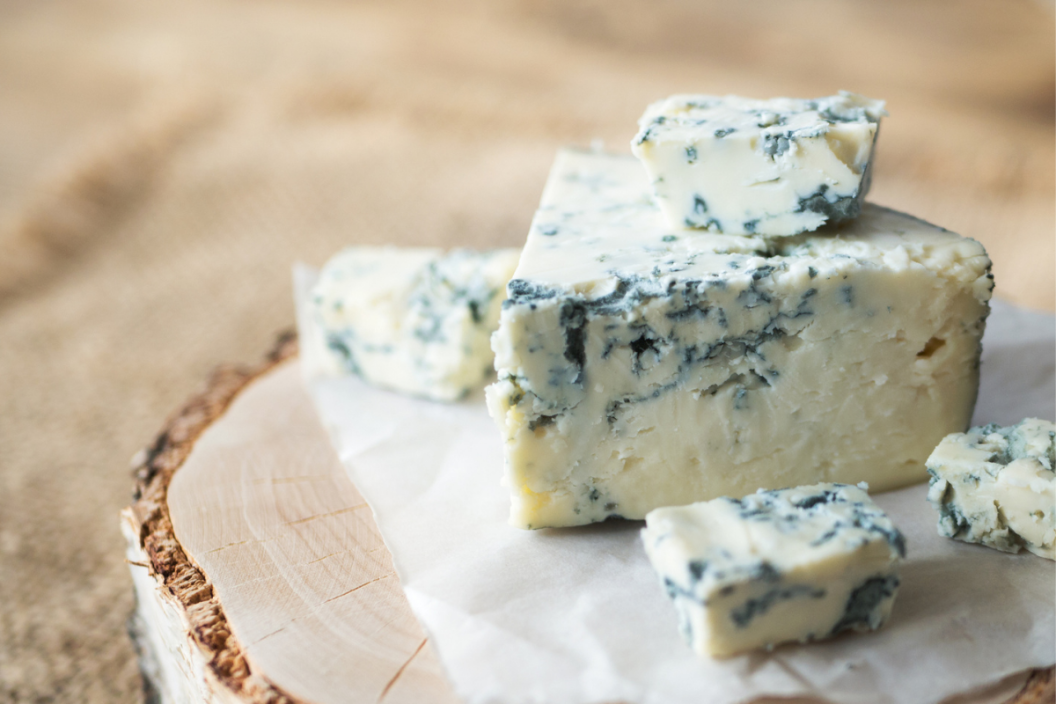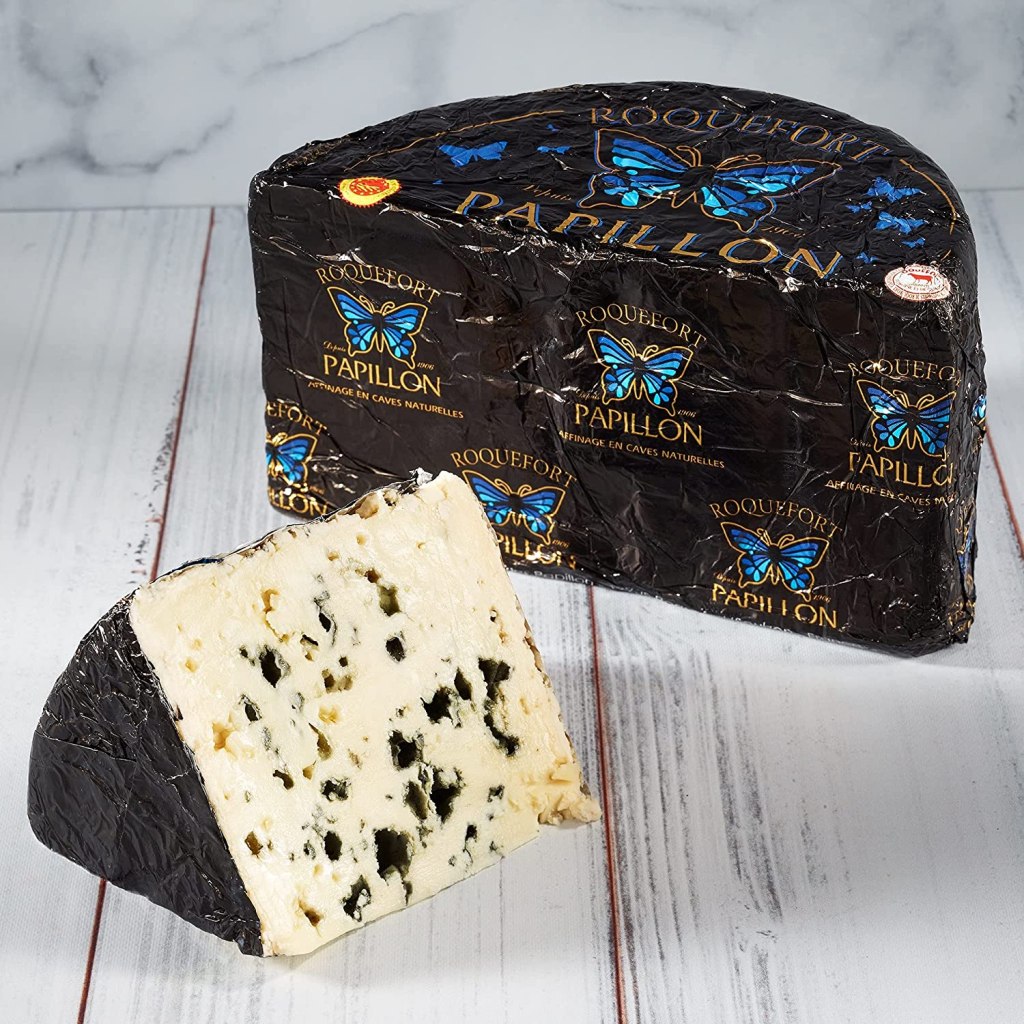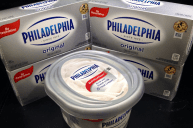When I think of spicy chicken wings, that tangy cooling side of celery and blue cheese salad dressing is never far behind. Or maybe a wedge salad with blue cheese dressing at a fancy steakhouse is more your style. But what is blue cheese? Or is it bleu cheese?
The category called blue cheese describes cheese produced with pasteurized cow, sheep, or goat's milk and ripened with cultures of the mold penicillium. It's known for having a salty sharp flavor with a pungent dirty socks aroma. But if you're a stinky cheese lover, other benefits of blue cheese include a low-fat content and plenty of protein, calcium, and phosphorous.
It All Starts With a Legend
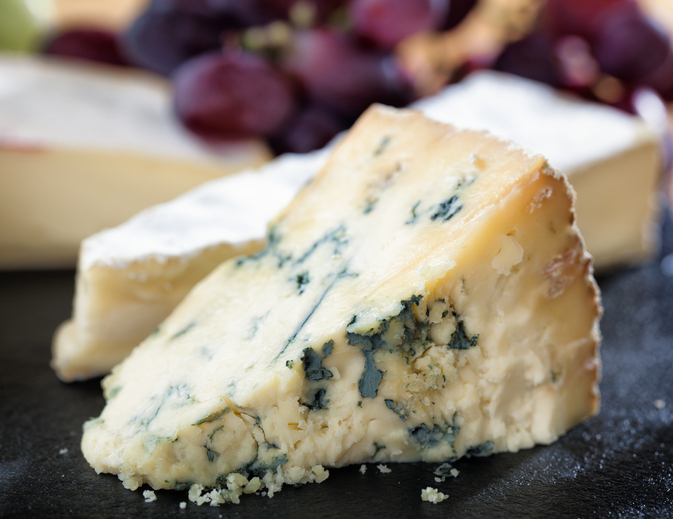
Getty Images
Blue cheese is the stuff of legend. No, seriously, there's a legend behind the creation of blue cheese. The story goes... a half-eaten loaf of bread was left behind by a cheesemaker in a cave during the Middle Ages in Roquefort France. At the time, caves were used for their steady temperature. When the cheesemaker came back to the cave, the bread had gone moldy and the cheese was covered in blue mold! Blue cheese expanded from France to Italy and then throughout Europe and over the pond to America.
There are different versions and names for the stinky deliciousness. Some can be crumbly and salty, perfect for salads and steak toppings. Some are creamy and semi-soft and not quite as stinky. But they all have that pretty streaking of blue, gray, black, or green veins of mold.
How Blue Cheese Is Made?
Like a weird science experiment, blue cheese starts as pasteurized raw milk. A starter culture is added to change the lactose to lactic acid. This turns the liquid into a solid. Rennet (an enzyme found in cow and sheep stomachs) is added to help further solidify and curdle the milk. The cheese curds are then cut to release the whey proteins. The curds are drained and shaped into wheels. The magic happens now when penicillium roqueforti is sprinkled over the cheese along with salt to prevent spoilage.
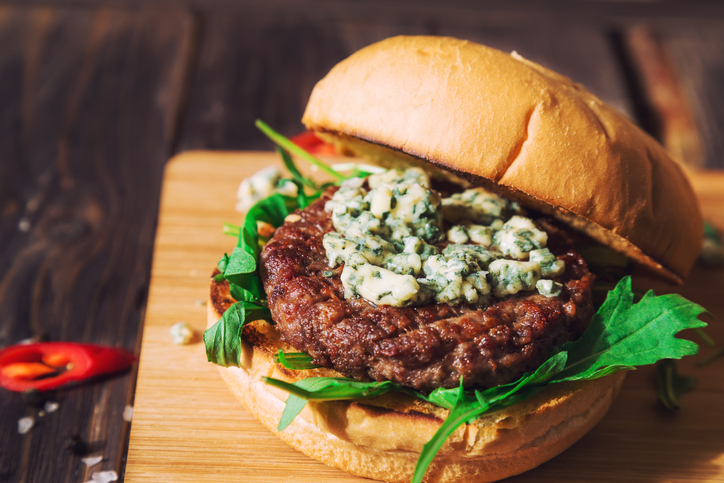
Getty Images
The cheese is left to age for 60 to 90 days. The blue veins or streaks are encouraged early in the aging process by inserting stainless steel rods right into the cheese. This helps air to circulate deep in the cheese wheel and get more veins and flavor. The name of this cheesemaking technique is called needling.
Other factors that affect the distinct flavor of whichever blue cheese you pick out of the cheese case include the type of milk used, and the diet of that particular cow, sheep, or goat.
Roquefort AOP Papillon Black Label Half Moon
French Roquefort is the original type of blue cheese and has a very fancy pedigree for cheese. Most cheese mongers agree it's the best blue cheese you can buy. Roquefort cheese is made from sheep's milk and aged in the limestone caves of Roquefort-sur-Soulzon in the South of France. It's creamy and crumbly with beautiful blue veins that come from the special mold that grows in those caves.
England gives us Blue Stilton. This cow's milk cheese is the official blue cheese of the English Midlands. You can find Stilton cheese in supermarkets wrapped in plastic in the shape of a toilet paper tube. Its nutty with a crumbly texture and has a deliciously salty flavor that is beautiful on a cheeseboard.
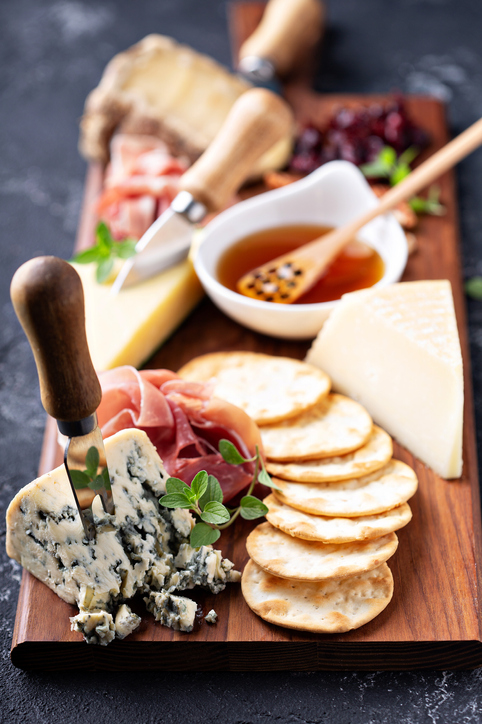
Getty Images
Gorgonzola is the Italian entry in the blue cheese category. Made from cow's milk, you can find gorgonzola aged and unaged. Unaged will be creamier with a more subtle sharpness to it. Aged gorgonzola is more of a classic stinky cheese with a sharper bite.
Denmark is represented in the blue cheese world with Danablu. This Danish cheese is made from cow's milk cow's milk. Since it's produced on an island, it has a delicious briny flavor along with its blue-green marbled appearance.
Blue cheese can also be enriched with cream known as double cream blue cheese. Creamy like double cream brie cheese, a name to look for in this style is Cambozola.
How to Store Blue Cheese
If you have leftover blue cheese, you can gobble it up when nobody's looking, or the more reasonable answer is to wrap it in foil or parchment paper. Keep it in the refrigerator for up to three weeks. It can also be frozen in an airtight container or freezer bag for up to three months.
READ MORE: Grilled Turmeric Chicken Wings
Products featured on Wide Open Eats are independently selected by our editors. However, when you buy something through our links, we may earn a commission.
